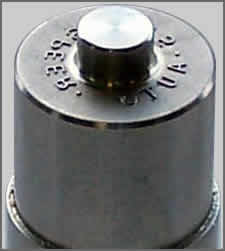- 01: Introduction
- 02: History
- 03: Propellants, Firearms, and Ammunition Development
- 04: Modern Firearms Manufacture
- 05: Small Arms Ammunition
- 06: Evidence Handling Procedures
- 07: Equipment and Instrumentation
- 08: Examination of Firearms
- 09: Cartridge and Shotshell Examination
- 10: Characterization and Evaluation of Fired Projectiles
- 11: Bullet Comparison and Identification
- 12: Gunshot Residue and Distance Determination
- 13: Toolmark Identification
- 14: Communicating Results
- Resources


Drawing Operations
Home > Small Arms Ammunition > Cartridge Case Manufacture > Drawing Operations
The draw operation leaves enough material in the base to form the web of the case. The web provides support for the primer and reduces the amount of swelling that can occur during firing.
After drawing, the cylinder is closed at one end, leaving extra material in the closed end. That end is convex after drawing; the draw dies work only the metal in the walls of the case. The next operation flattens the base, squaring it and applying the head stamp.
Heading also forms the rim for a rimmed case or removes the excess material when creating a rimless case. Heading forms a primer pocket in the web. The cylindrical case is mounted in a die to prevent changes in diameter; a support punch is placed inside the case to resist the blow of the bunter. The bunter has a central protrusion that will form the primer pocket (the recess that accepts primer during cartridge assembly).

Bunter to form primer pocket and headstamp
If the case is to have a protruding rim (e.g., 30-30 Winchester), the supporting die requires a step in the end facing the bunter. The step allows all of the extra metal to flow toward the end and creates the mass of material that will eventually form the rim. The die that supports a rimless case (e.g., 5.56 mm NATO) has a slight enlargement at the exact same point. This enlargement provides that there is plenty of extra metal to ensure that subsequent operations keep the case head concentric.




